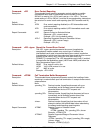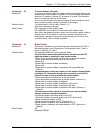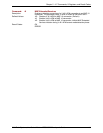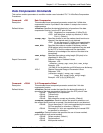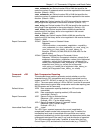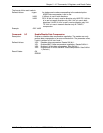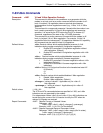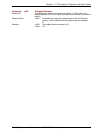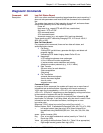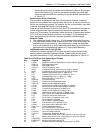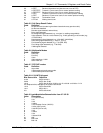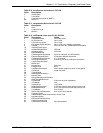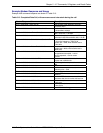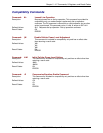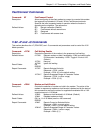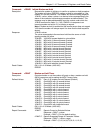
Chapter 5 – AT Commands, S-Registers, and Result Codes
Multi-Tech Systems, Inc. SocketModem MT5600SMI Developer’s Guide 65
Diagnostic Commands
Command: #UD Last Call Status Report
Description: #UD is an action command requesting logged operation events reporting. It
does not take parameters and must be the last command in the command
line.
The modem logs aspects of their operation for each call, and saves these
results until cleared by one of the following events:
Power off.
Hard reset (e.g., negate DTR with &D3 set; reset button).
Soft reset = ATZ or AT&F.
ATD command issued.
ATA command issued.
Automatic answer (e.g., set register S0>0 and ring detected).
These results are NOT cleared by changing DTR, V.24 circuit 108.2, if
&D0, &D1 or &D2.
Data Call State Model:
For purposes of this command, there are four data call states, and
associated status issues:
1. Call Setup
-Calling DCE: get dial tone, generate dial digits, and detect call
progress signals.
-Answering DCE: detect ringing, detect Caller ID, etc.
2. Negotiation
-V.25 calling tone/answer tone exchanges
-V.8 or V.8bis call function negotiations
-V-series modem carrier detection and training
-Modem-to-modem protocols (e.g., V.42, V.42bis).
3. Data Transfer
-Bit-error rates, for each direction
-Rate renegotiation
-Retraining
4. Call Termination
-protocol disconnect signals
-carrier disconnect signals
-loss of carrier
-excessive error rates
Command Syntax:
In response to this command, the modem will report one or more lines of
information text as defined below. Information text format conforms to
V.250; each line is preceded by a <CR><LF> pair, and terminated by
<CR><LF>. (CR and LF characters may be changed by writing new values
to the contents of registers S3 and S4, respectively.)
The modem may generate a single line or multiple lines, followed by OK
result code. For example, if call setup failed, only that result is useful. Each
information text line is formatted as follows, including one or more
key=value pairs:
Response: DIAG <token key=value [[key=value] [key=value]] …>
Defined Values: DIAG 5 hexadecimal characters (44h, 49h, 41h, 47h, 20h)
< Left angle bracket (less than sign) (3Ch) token Unique 32-bit
hexadecimal string 2A4D3263(32h, 4h1, 34h, 44h, 33h, 32h, 36h,
33h)
space space character (20h)
Key One- or two-digit hexadecimal number (see Key in Table 5-4)
= Equal sign (3Dh)
Value Any string as defined below (Table 5-4 - Table 5-9 as appropriate)
> Right angle bracket (greater than sign) (3Eh)



